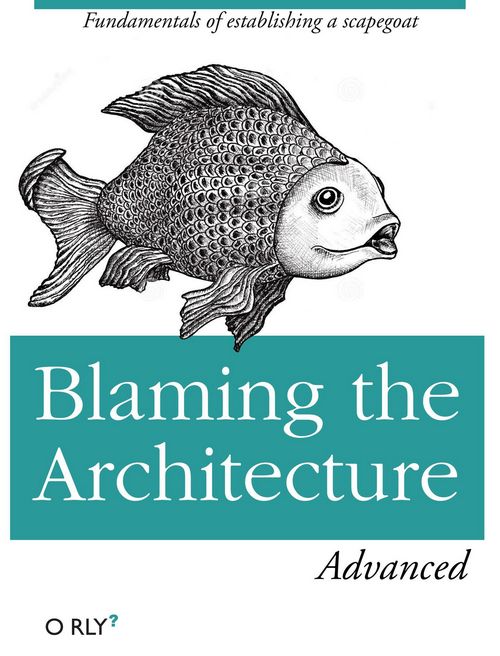
In the tempestuous sea of software development, where deadlines loom like thunderclouds and requirements change with the wind, there sails a ship with a crew all too familiar with the art of "Blaming the Architecture." This is not just a practice, but an art form, meticulously honed by developers who have faced the kraken of bugs and sailed through the Bermuda Triangle of poorly documented legacy code.
Our tale unfolds in the bustling metropolis of Codeville, a city renowned for its towering data structures and sprawling networks. In the heart of this digital dominion stands the office of "Pivot & Patch Inc.," a software company celebrated for its agile methodologies and infamous for its architectural blame games.
The protagonist of our story is none other than Archie, a seasoned developer with a keen eye for detail and an even keener ability to identify which part of the architecture to blame for any given problem. Archie is a master of the craft, a virtuoso who understands that in the grand symphony of software development, the architecture is always the first chair violinist—forever in the spotlight and the first to be critiqued.
"Pivot & Patch Inc." is in the throes of deploying their latest application, a revolutionary platform designed to revolutionize the way people revolutionize things. However, as launch day approaches, a sinister fog of bugs and performance issues descends upon the project. The developers gather around their battle stations, logs and metrics flying across screens in a frenzied attempt to diagnose the issue.
It is here that Archie steps into the fray, armed with the sacred texts of "Blaming the Architecture." With the precision of a surgeon and the insight of a philosopher, Archie begins the ancient ritual. He points to the monolithic design, a relic of a bygone era, as the root of all evil. "It's the architecture's fault!" he proclaims, his voice echoing off the open-plan office walls. "Its rigid structure cannot support the weight of our innovative features!"
The developers nod in solemn agreement, their earlier panic replaced by a unified sense of purpose. Together, they embark on a crusade to refactor, to decouple, to microservice-ize. Night and day, they code, guided by the principles laid out in the gospel of "Blaming the Architecture."
Weeks turn to months, and the application transforms. The monolith becomes a beautifully orchestrated ballet of services, each dancing to the tune of its own RESTful API. And when the day of the next launch arrives, the team watches with bated breath as the application goes live.
Success! The platform runs smoothly, handling user requests with the grace of a gazelle prancing through the Savannah. The team erupts in cheers, their joyous cries filling the office. Archie smiles, knowing that the day is saved.
But in the back of his mind, a small voice whispers, a reminder that in the world of software development, the architecture is but one piece of the puzzle. Today, it was the scapegoat, the necessary villain in their story of triumph. But tomorrow, who knows what challenges will arise?
And so, the cycle continues in Codeville, where "Blaming the Architecture" remains an essential skill in the developer's toolkit, a fundamental strategy for navigating the stormy seas of software development. Yet, amidst the finger-pointing and refactorings, there lies a deeper truth—a recognition that responsibility is shared, and that the path to true innovation is paved with collaboration, understanding, and, occasionally, a good-natured blame game.